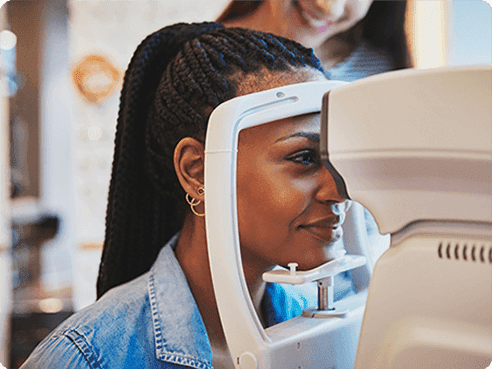All Categories
Featured
Table of Contents

Routine eye assessments are necessary for maintaining great vision and discovering potential eye health issues early. However, the regularity of these examinations can differ significantly based on an individual's age, lifestyle, and overall health. Recognizing the suggested schedule for eye exams can help make sure that individuals of every ages receive proper care and monitoring for their eye health.
Newborns and Toddlers (0-2 Years)
For kids and infants, eye exams are important for discovering any prospective vision problems early on. The American Academy of Ophthalmology suggests that a kid's initial eye test should occur at around six months of age. Throughout this initial check out, the eye care professional will certainly analyze the child's visual development and look for any noticeable eye problems.Following this first examination, it is advised that kids have an additional eye examination at age three. This browse through will certainly concentrate on assessing the youngster's overall aesthetic function, including eye positioning and the ability to track items. If no concerns are spotted, the next examination must be scheduled prior to the kid starts college, usually around age five or six.
School-Aged Youngsters (6-18 Years)
Routine eye exams need to be scheduled every one to two years as soon as kids get to college age. Vision is important for finding out and growth, and several schools carry out vision screenings. However, these testings do not change a comprehensive eye test by an eye care professional.For kids involved in activities or sports calling for significant visual emphasis, yearly eye tests might be a good idea. Additionally, if a child exhibits signs of vision problems-- such as trouble checking out, squinting, or regular headaches-- a check out to the eye physician need to be arranged asap.
Youthful Grownups (19-39 Years)
Young person commonly have less vision modifications than older age, however normal eye examinations continue to be necessary. The basic recommendation is to schedule an eye test every 2 years throughout this duration. People with particular threat elements-- such as a household background of eye condition, diabetes, or those who wear call lenses-- ought to consider annual eye examinations.Furthermore, those who spend substantial time on digital devices may experience electronic eye pressure. If signs such as dryness, fatigue, or blurred vision happen, it might be important to see an eye treatment professional faster.
Adults (40-64 Years)
As people get in midlife, the chance of establishing vision issues rises. Grownups aged 40 to 64 must arrange eye examinations each to 2 years. This age team might begin to experience presbyopia, a natural age-related problem that makes it challenging to concentrate on close items. Eye exams can additionally aid identify other common age-related conditions such as glaucoma, cataracts, and macular degeneration.If individuals in this age team have threat elements such as hypertension or diabetes mellitus, they might call for even more regular examinations to check their eye wellness closely.
Senior Citizens (65 Years and Older)
For seniors, routine eye tests become a lot more essential. The American Optometric Organization advises that individuals aged 65 and older have an eye exam at the very least as soon as a year. Older adults go to a higher risk for various eye illness, including cataracts, glaucoma, and age-related macular deterioration. Early discovery and treatment of these conditions can prevent vision loss and boost the high quality of life.Final thought.
Comprehending the suitable routine for eye examinations based on age is vital for maintaining ideal eye health and wellness throughout life. By sticking to these standards and consulting with an eye care professional, people can take proactive actions towards protecting their vision and overall health.Table of Contents
Latest Posts
Picking the Right Place: What to Think about for Wedding Events, Conferences, and Occasions
Published en
1 min read
The Boogaloo Sports Bar & Grill at FunCity Hotel Resort: Where Fun Meets Flavor
Published en
1 min read
Living Area Furnishings Styles
Published en
0 min read
More
Latest Posts
Picking the Right Place: What to Think about for Wedding Events, Conferences, and Occasions
Published Mar 24, 25
1 min read
The Boogaloo Sports Bar & Grill at FunCity Hotel Resort: Where Fun Meets Flavor
Published Feb 09, 25
1 min read
Living Area Furnishings Styles
Published Jan 12, 25
0 min read